TSA Conducts Tortoise Husbandry Workshops in Madagascar
by Rick Hudson 
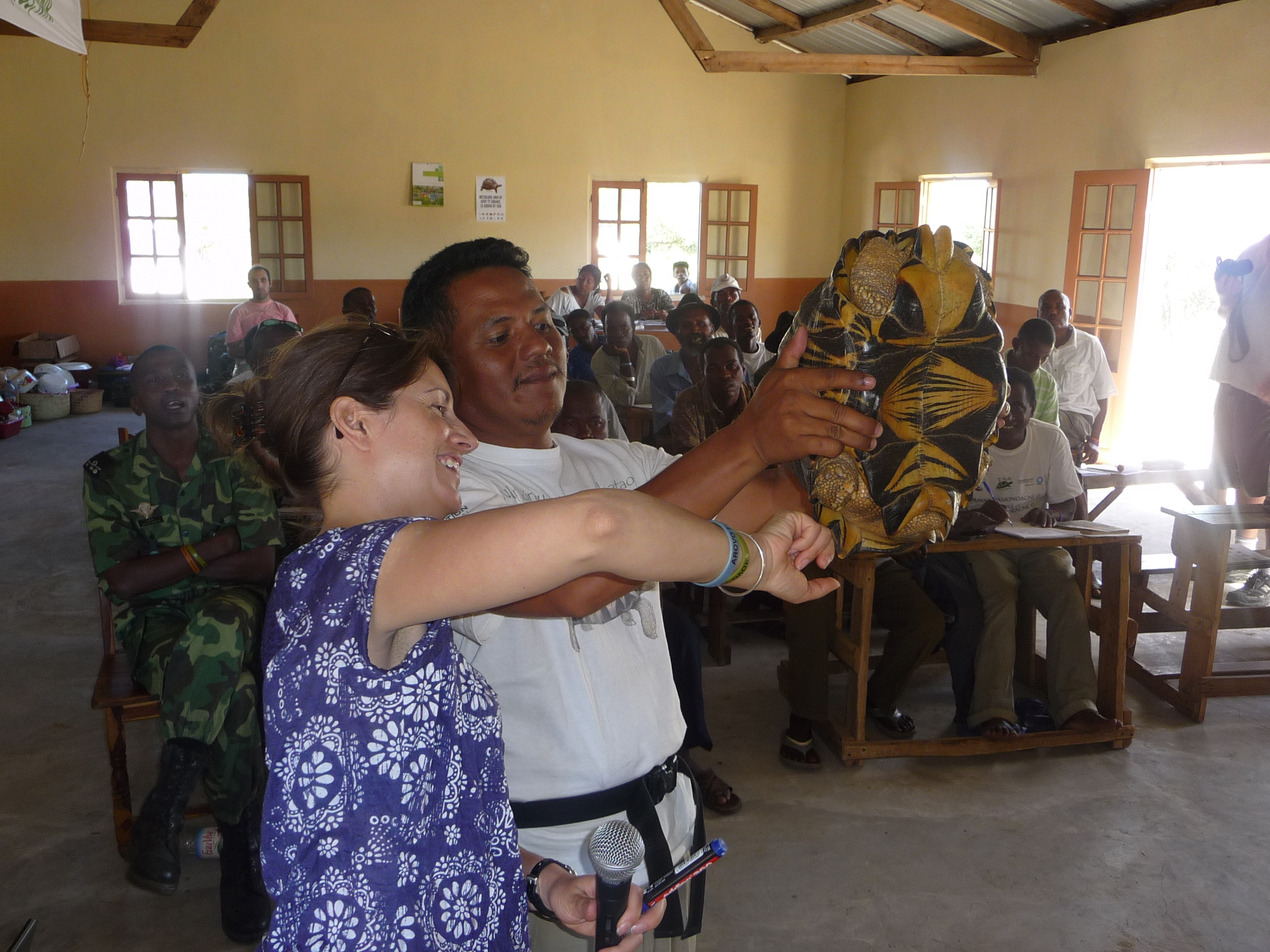 In response to the growing number of tortoise confiscations in Madagascar, and a lack of trained tortoise-care personnel and dedicated facilities, the TSA recently conducted two husbandry training workshops aimed at improving care and survival. Often, these confiscations end poorly for the tortoises involved, and we continue to see appalling levels of mortality due to improper care and inadequate holding facilities. Radiated Tortoises are increasingly becoming refugees in their own country, and with populations crashing rapidly, there is an overwhelming need to ensure that as many of these creatures as possible survive.
In response to the growing number of tortoise confiscations in Madagascar, and a lack of trained tortoise-care personnel and dedicated facilities, the TSA recently conducted two husbandry training workshops aimed at improving care and survival. Often, these confiscations end poorly for the tortoises involved, and we continue to see appalling levels of mortality due to improper care and inadequate holding facilities. Radiated Tortoises are increasingly becoming refugees in their own country, and with populations crashing rapidly, there is an overwhelming need to ensure that as many of these creatures as possible survive.
Two training workshop were conducted, the first in the newly dedicated school house at Antsakoamasy from 20-21 March, and the second at SOPTOM’s Village des Tortues in Ifaty from 27-28 March. A total of approximately 50 people participated in the workshops, representing Madagascar National Parks (MNP), the Forestry Department, local Gendarmes (police) and local communities with potential tortoise release sites. The workshops were coordinated with local support by TSA Madagascar Tortoise Coordinator Herilala Randriamahazo, and Sylvain Mahazotahy. Sylvain is Tandroy by birth, and was recently hired by TSA to coordinate our community-based tortoise conservation work in the south.
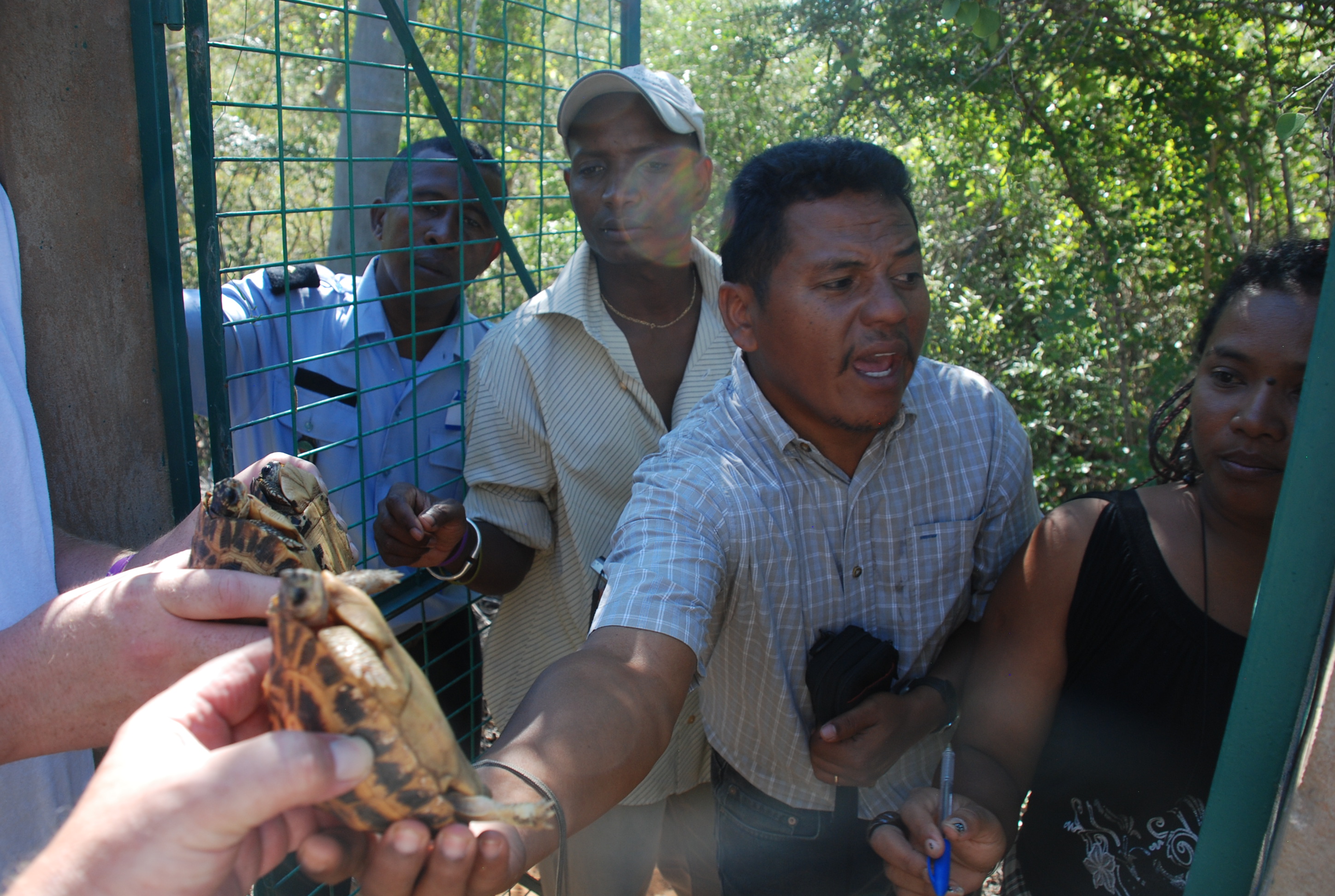 Participants were provided with a Husbandry Manual for both Radiated and Spider Tortoises prepared by instructors Christina Castellano, Michael Ogle (Knoxville Zoo), and Rick Hudson (TSA). Topics included species identification and distribution, threats to tortoise populations, national and international laws that protect tortoises, roles and responsibilities of various groups in tortoise confiscations, factors to consider when transporting tortoises seized from the trade, triage, housing construction and husbandry considerations, feeding and watering and the collection of naturally occurring food plants. Lectures also dealt with the types of information that needed to be collected from confiscations, and reintroduction of tortoises.
Participants were provided with a Husbandry Manual for both Radiated and Spider Tortoises prepared by instructors Christina Castellano, Michael Ogle (Knoxville Zoo), and Rick Hudson (TSA). Topics included species identification and distribution, threats to tortoise populations, national and international laws that protect tortoises, roles and responsibilities of various groups in tortoise confiscations, factors to consider when transporting tortoises seized from the trade, triage, housing construction and husbandry considerations, feeding and watering and the collection of naturally occurring food plants. Lectures also dealt with the types of information that needed to be collected from confiscations, and reintroduction of tortoises.
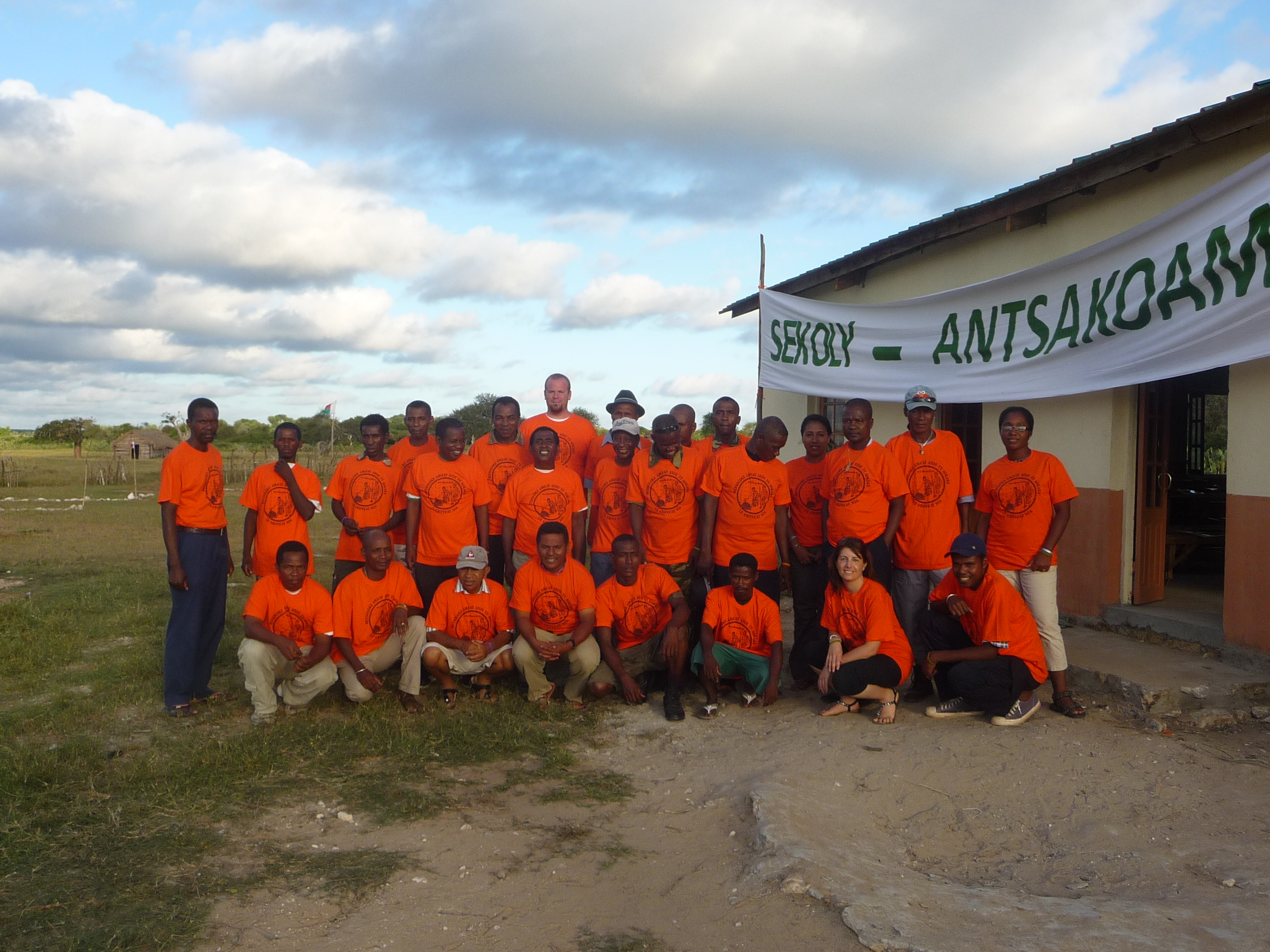 The Antsakoamasy workshop followed a tortoise workshop in February in the Tandroy capital of Ambovombe that created a Regional Tortoise Committee. So, many of the participants were familiar with the issues and were glad to receive the technical training that would better allow them to care for confiscated tortoises. There were lively discussions on the roles and responsibilities among partners involved in the fight against illegal harvesting of tortoises. In particular, the establishment of temporary holding facilities in Beloha and the other four districts within the Androy region was a serious topic of discussion.
The Antsakoamasy workshop followed a tortoise workshop in February in the Tandroy capital of Ambovombe that created a Regional Tortoise Committee. So, many of the participants were familiar with the issues and were glad to receive the technical training that would better allow them to care for confiscated tortoises. There were lively discussions on the roles and responsibilities among partners involved in the fight against illegal harvesting of tortoises. In particular, the establishment of temporary holding facilities in Beloha and the other four districts within the Androy region was a serious topic of discussion.
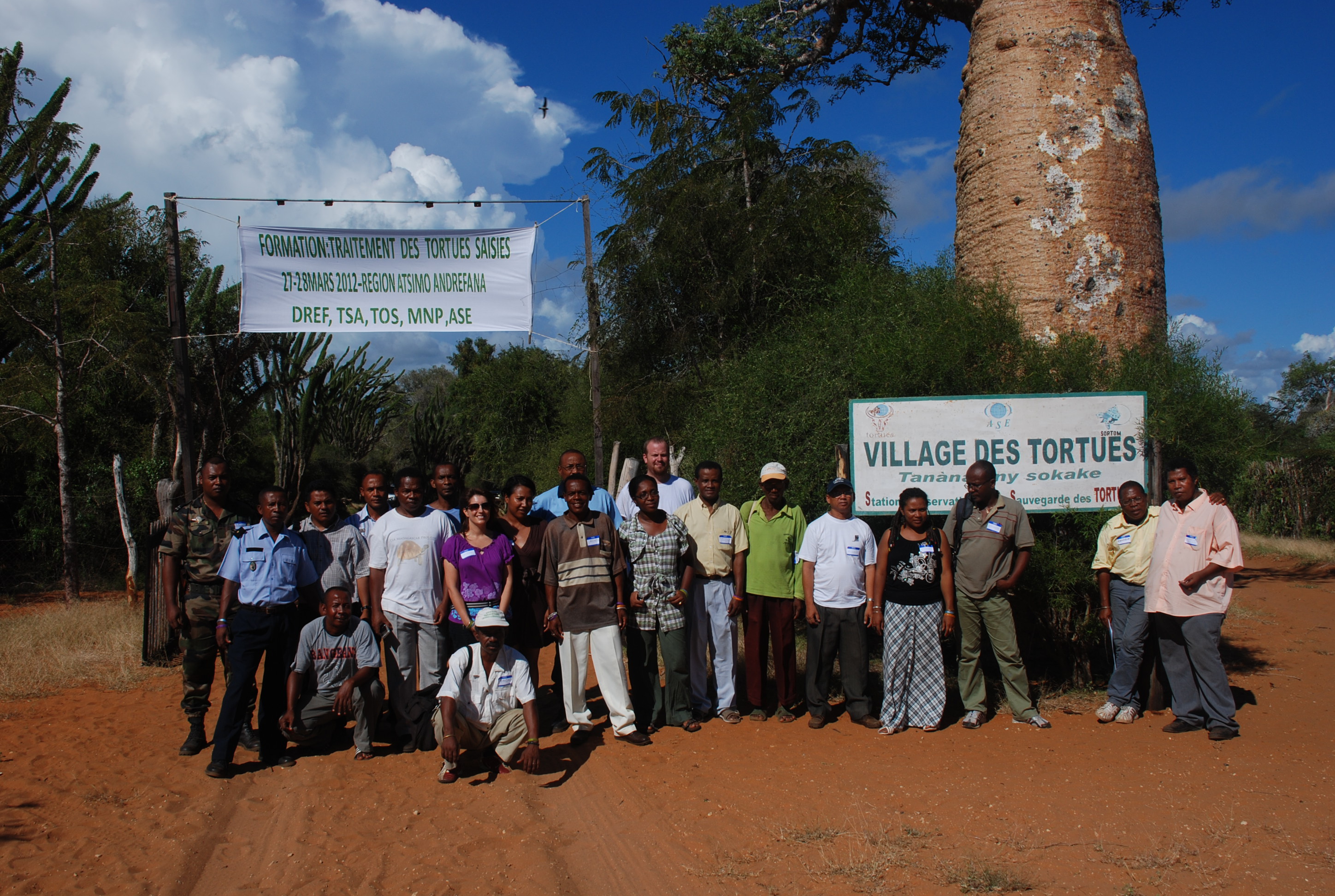 Participants in the Ifaty workshop were quick to admit that the Androy Region is well in advance of those in the western Atsimo Ardrefana Region where there is no cultural taboo against harming tortoises, and where there is little support for tortoise protection. This area saw most of its Sokake disappear years ago, though Tulear (the region’s largest city) continues to be a significant “drain” on tortoise populations to the south and along the coast. Participants agreed to lobby regional authorities to become a part of the current tortoise conservation initiative, and intend to approach the judiciary system to be more cooperative in dealing with illegal tortoise harvesting cases.
Participants in the Ifaty workshop were quick to admit that the Androy Region is well in advance of those in the western Atsimo Ardrefana Region where there is no cultural taboo against harming tortoises, and where there is little support for tortoise protection. This area saw most of its Sokake disappear years ago, though Tulear (the region’s largest city) continues to be a significant “drain” on tortoise populations to the south and along the coast. Participants agreed to lobby regional authorities to become a part of the current tortoise conservation initiative, and intend to approach the judiciary system to be more cooperative in dealing with illegal tortoise harvesting cases.
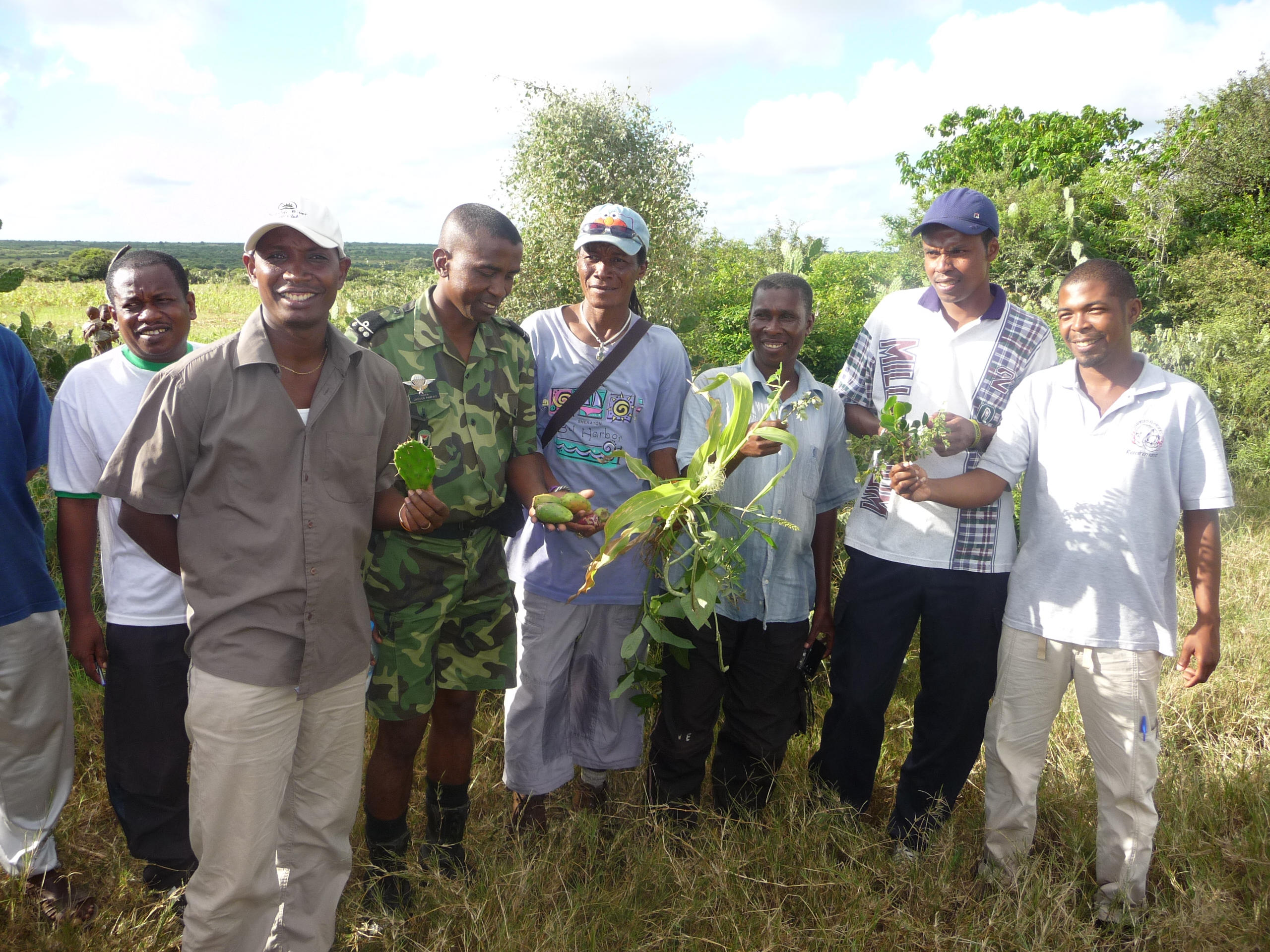 A highlight of both workshops was the enthusiasm shown by participants in the tortoise food plant collection exercise. Each workshop split up into three groups and went out to retrieve plants that they knew tortoises to eat. We were amazed with how many species of plants they returned with, and the depth of their knowledge as to what part of the plant the tortoises preferred, and the seasonality of those plants.
A highlight of both workshops was the enthusiasm shown by participants in the tortoise food plant collection exercise. Each workshop split up into three groups and went out to retrieve plants that they knew tortoises to eat. We were amazed with how many species of plants they returned with, and the depth of their knowledge as to what part of the plant the tortoises preferred, and the seasonality of those plants.
Perhaps most encouraging were lively discussions that took place as participants exchanged views and attempted to work through the various obstacles to tortoise conservation in their two regions. Primary among them are the lack of financial resources available locally to effectively deal with tortoise protection, enforcement and the resulting confiscations. We believe that these workshops could prove catalytic as we now have organized groups of empowered advocates who, at the very least, are monitoring the illegal tortoise trade. The TSA’s challenge will be to identify the resources that will now allow them have an impact on tortoise conservation.
The TSA is currently working on a comprehensive strategy for safely and humanely transitioning tortoises caught up in the trade back into the wild. This will not be a simple process but over the next few years we will be working to identify safe and protected habitats, with supportive communities, in which to return tortoises. We will need to build numerous temporary rescue facilities where confiscated tortoises can be unpacked and immediately cared for. From there tortoises will move to a regional rescue center for which there is currently only one, the Village des Tortues at Ifaty (near Tulear on the west coast); a second center for the region east of the Menarandra River is planned for 2013 with World Bank funding. Tortoises will remain at the Rescue Center for longer periods of time, for processing, health and genetic screening, and preparation for release into the wild. This is an ambitious and multi-step process, but is essential if we are to properly handle the vast numbers of tortoises that we anticipate in the future as enforcement efforts improve.
These workshops were supported with financial support from World Wildlife Fund (WWF) Education for Nature grant. We thank the Knoxville Zoo for covering the costs of printing the husbandry manual and for various other courtesies.
